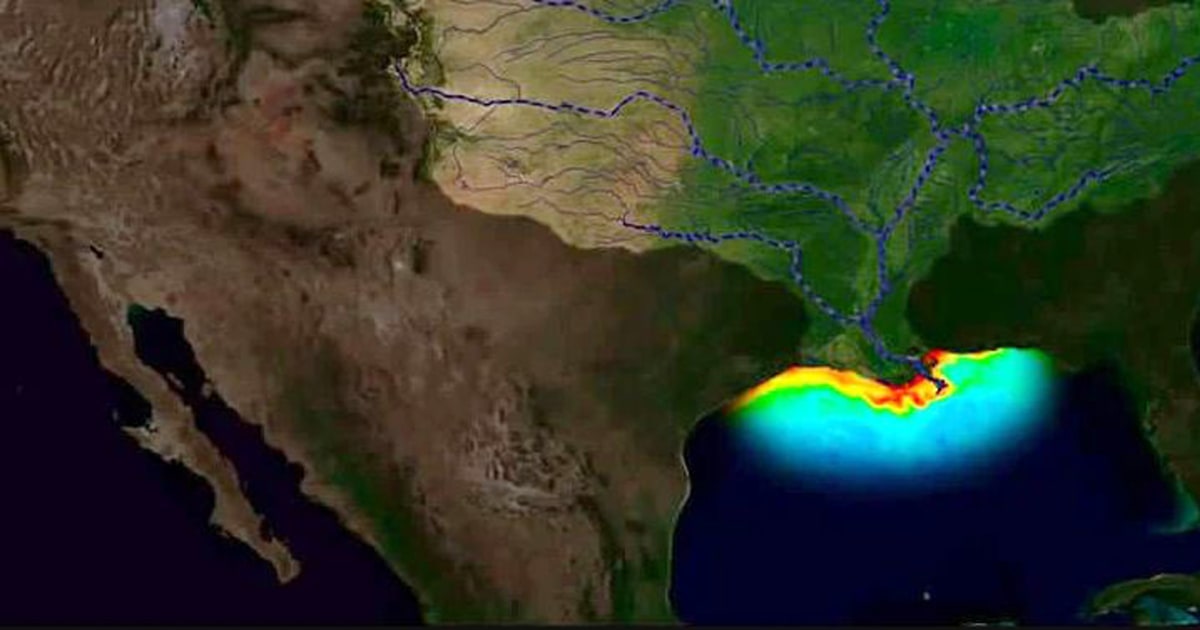
This year’s Gulf of Mexico “dead zone” — an area where there’s too little oxygen to support marine life — is larger than average, according to researchers.
Scientists supported by the National Oceanic and Atmospheric Administration determined that the area off Louisiana and Texas’ coasts covers about 6,334 square miles (16,405 square kilometers), the agency said in a news release Tuesday.
Over the past five years, the average size of the low-oxygen, or hypoxic, zone has been 5,380 square miles (13,934 square kilometers). That’s 2.8 times larger than the goal set by a federal task force to reduce the five-year average to 1,900 square miles (4,921 square kilometers) or smaller by 2035.
Because year-to-year measurements can vary widely — this year’s zone is about three times the size of 2020’s — NOAA says a multiyear average “captures the true dynamic nature of the zone.”
This summer’s measurement was larger than the average-sized area that the agency predicted in June based on Mississippi River nitrogen and phosphorous runoff data.
River discharge that drained into the Gulf of Mexico was above normal for the three weeks before the weeklong survey started on July 25. It was conducted by scientists from Louisiana State University and the Louisiana Universities Marine Consortium.
“The distribution of the low dissolved oxygen was unusual this summer,” Nancy Rabalais, the lead investigator, said. “The low oxygen conditions were very close to shore with many observations showing an almost complete lack of oxygen.”
Human activities in urban and agricultural areas throughout the Mississippi River watershed primarily cause the annual “dead zone.” Excess nutrients flow into the Gulf of Mexico and stimulate an overgrowth of algae, which die and decompose. The algae deplete oxygen as they sink to the bottom.
NOAA highlighted efforts to reduce fertilizer runoff and other pollution from contributing to the hypoxic area. Radhika Fox, the Environmental Protection Agency’s assistant administrator for water, said climate change also needs to be considered to make progress.
“This year, we have seen again and again the profound effect that climate change has on our communities — from historic drought in the west to flooding events,” Fox said. “Climate is directly linked to water, including the flow of nutrient pollution into the Gulf of Mexico.”
Source: | This article originally belongs to Nbcnews.com









